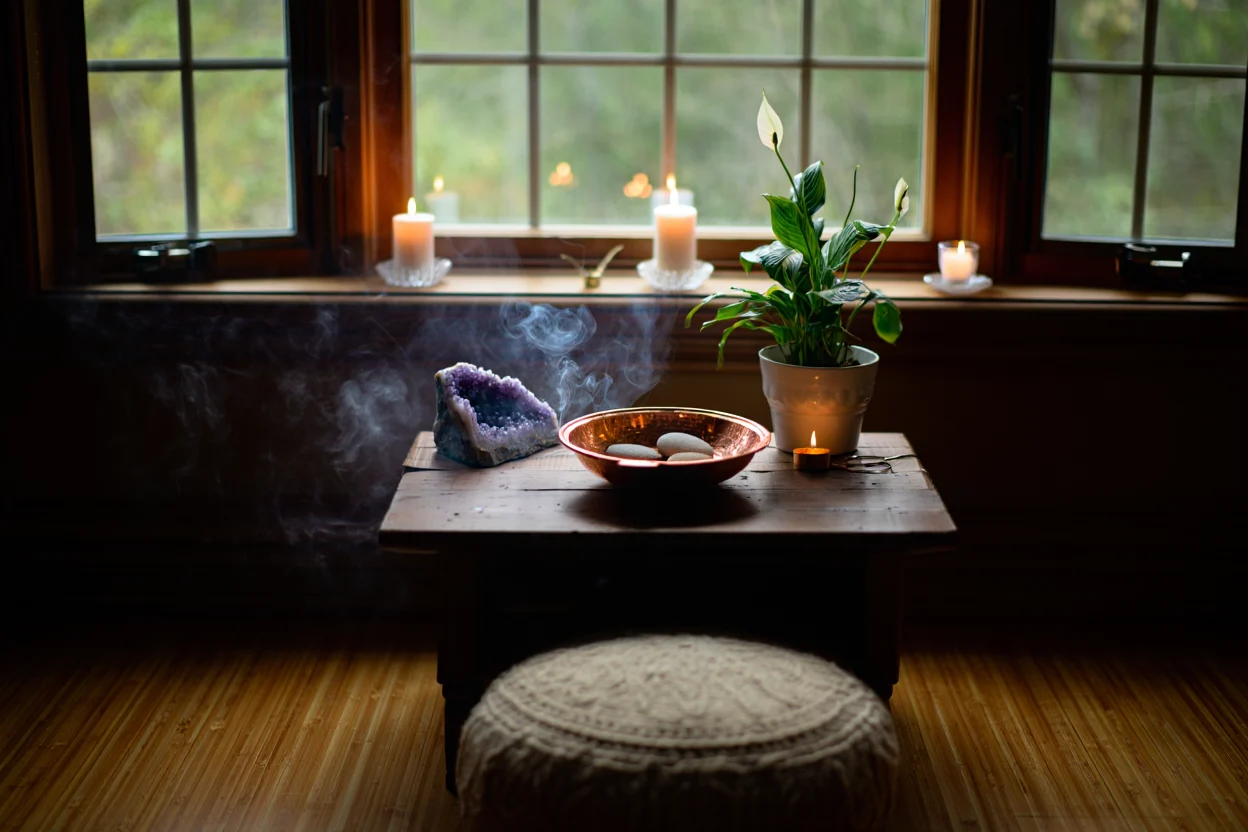A sacred space, such as a home altar, serves as a physical reminder of your spiritual journey—a place where you can retreat, meditate, and reflect. Whether you’re new to spirituality or seeking to deepen your practice, creating a home altar can help you cultivate intention, focus, and peace. In this article, we’ll explore how to design a meaningful altar that aligns with your personal beliefs and supports your spiritual growth.
Why Sacred Spaces Matter
Sacred spaces provide a sanctuary from the chaos of daily life, offering a dedicated area for connection, contemplation, and renewal. A home altar acts as a focal point for your spiritual practice, helping you stay grounded and aligned with your intentions.
1. Encourages Consistency
Having a designated space makes it easier to return to your practice regularly, whether it’s meditation, prayer, or journaling.
2. Amplifies Energy
Altars often include symbolic objects that carry personal meaning, amplifying the energy and intention of the space.
3. Promotes Mindfulness
The act of creating and maintaining an altar encourages mindfulness and presence, deepening your spiritual awareness.
Step 1: Choose a Location
The first step in creating a sacred space is selecting a location that feels calm and inviting.
1. Find a Quiet Corner
Choose a spot in your home where you won’t be easily disturbed. This could be a windowsill, a shelf, or even a small table.
2. Consider Natural Light
If possible, select a location with access to natural light. Sunlight enhances the energy of the space and creates a warm, uplifting atmosphere.
3. Keep It Accessible
Your altar should be easy to reach so you can interact with it daily—whether it’s lighting a candle, placing an object, or simply sitting nearby.
Step 2: Gather Meaningful Objects
Your altar is a reflection of your spiritual journey, so fill it with items that resonate with your intentions and beliefs.
1. Crystals and Stones
Include crystals like amethyst (calm), rose quartz (love), or clear quartz (clarity) to amplify the energy of your space.
2. Candles and Incense
Candles symbolize light and transformation, while incense can purify the space and create a calming ambiance.
3. Photos or Symbols
Add photos of loved ones, spiritual symbols (like a cross, Om, or pentacle), or images that inspire you. These items personalize the altar and deepen its meaning.
Step 3: Design Your Altar
The arrangement of your altar matters—it should feel intentional and harmonious.
1. Use Layers and Levels
Place objects on different levels using stands, books, or boxes to create visual interest and depth.
2. Incorporate the Elements
Many spiritual traditions honor the four elements: earth (stones, plants), air (incense, feathers), fire (candles), and water (a small bowl of water). Including these can enhance balance and connection.
3. Keep It Minimal
Avoid clutter. Choose a few meaningful items rather than overloading the space—simplicity fosters focus and clarity.
Step 4: Use Your Altar Daily
An altar is not just decorative—it’s a living part of your spiritual practice. Here’s how to engage with it regularly.
1. Start Your Day at the Altar
Spend a few moments each morning setting an intention, lighting a candle, or simply sitting in silence.
2. Reflect in the Evening
End your day by returning to your altar to release stress, express gratitude, or journal about your experiences.
3. Refresh the Space
Regularly update your altar to reflect your current goals or season of life. Add fresh flowers, swap out crystals, or rearrange objects to keep the energy dynamic.
Step 5: Make It Personal
Your altar should feel uniquely yours, resonating with your beliefs and journey.
1. Reflect Your Beliefs
Whether you follow a specific tradition or create your own path, let your altar honor what matters most to you.
2. Include Nature
Incorporate natural elements like leaves, shells, or branches to connect with the earth’s energy.
3. Trust Your Instincts
There’s no right or wrong way to design an altar. Let your intuition guide you in choosing and arranging items.
Final Thoughts
Creating a home altar is a powerful way to establish a sacred space for meditation, reflection, and spiritual alignment. By choosing a meaningful location, gathering symbolic objects, designing intentionally, using the space daily, and personalizing it to your journey, you can build a sanctuary that nurtures your spirit and supports your growth. Remember, your altar is a living expression of your inner world—let it evolve as you do.
What will you include in your home altar to support your spiritual practice? Share your thoughts—we’d love to hear how this sacred space is enhancing your journey!

